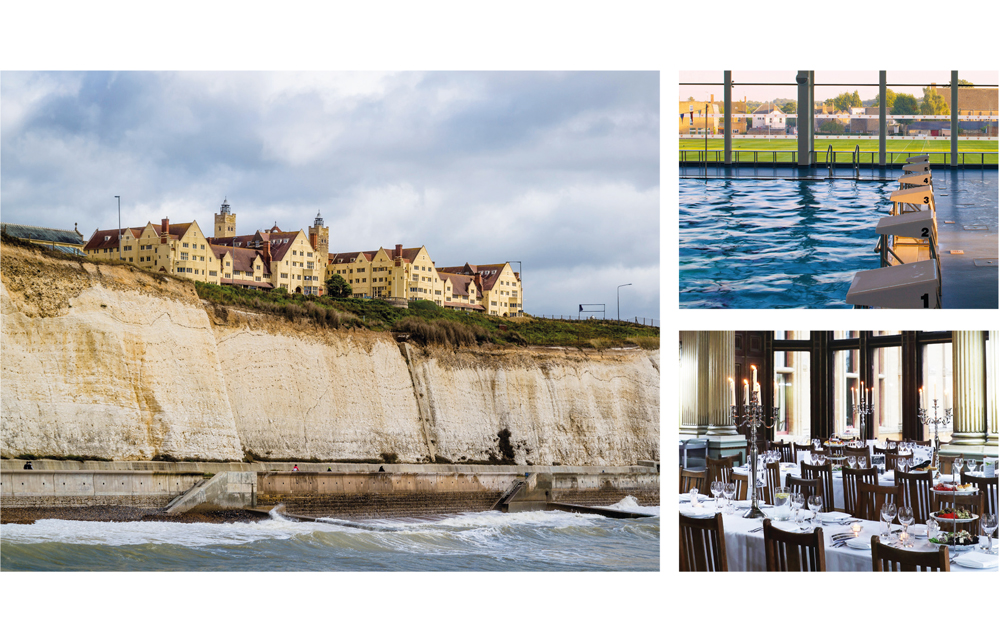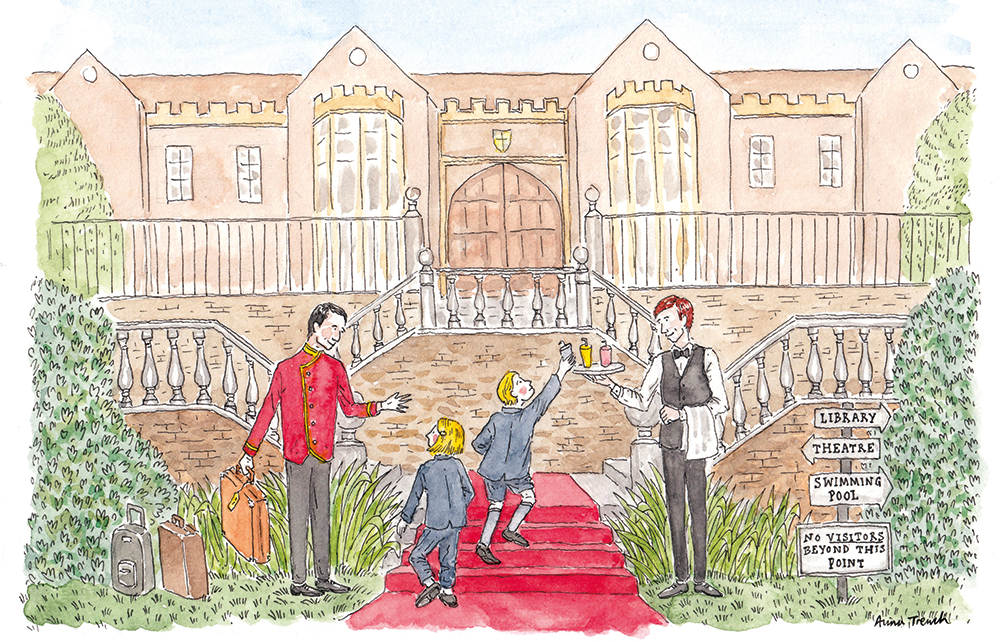It is one of those ancient mysteries: why has no Labour government been able to abolish private schools? Harold Wilson didn’t spare grammar schools (and nor did Edward Heath’s government, which followed). New Labour, too, for all its reforming zeal, never dared disembowel the independent sector. When the party did promise to do so – in 1983 and 2019 – it lost heavily.
But are private schools about to run out of luck? For once we have a Labour opposition which is threatening to end their charitable status – and which also looks as if it will cruise to victory at the next general election. Labour’s pre-manifesto has promised to end tax breaks in order to ‘fund our vision for the education system’. It has suggested that it hopes to raise £1.7 billion in this way – mostly by charging VAT on school fees and by ending exemptions from business rates. The money would be spent on a ‘national excellence programme’ for state schools.
If Labour achieves a majority, it’s a safe guess the removal of schools’ charitable status will happen
Not all Labour MPs are signed up: Darren Jones, MP for Bristol North West, disowned his party’s policy on a visit to an independent school in his constituency in December last year. But if Labour achieves anything like the sort of majority suggested by the polls, it is a pretty safe guess that the removal of charitable status will happen. So what does it mean?
One factor that has prevented Labour subjecting private schools to higher taxes in the past – or even abolishing them altogether – is the fear that this could impose a huge extra burden on state schools. If the 7 per cent of children who currently attend independent schools were suddenly to seek state places, where would the system find the space? In the most extreme case – where every child at private school is sent to a state school instead – taxpayers would face a hit of about £3.5 billion a year: that’s 544,000 pupils multiplied by £6,500, the average annual cost of state education per child.
Realistically, though, nothing remotely close to this is going to happen. Indeed, it is questionable whether private school numbers would drop at all. Parents have already had to absorb a 60 per cent real-terms increase in school fees since the turn of the century; yet this didn’t stop pupil numbers growing from 484,000 in 2000 to that 544,000 last year. These statistics might well embolden Labour. If parents have been prepared to shell out an extra 60 per cent in fees, it might well be argued that they won’t be put off by an extra 20 per cent for VAT.
This is an argument that the Independent Schools Council (ISC), not unnaturally, is keen to counter. ‘A gradual rise in fees over a decade is very different to a sharp shock of 20 per cent to parents’ wallets overnight, especially in a cost-of-living crisis,’ says ISC chief executive Julie Robinson. ‘Labour’s tax on education would not raise the money it claims and would place unnecessary strain on the state system.’

The ISC claims that the independent schools’ sector is already paying £5.1 billion a year in tax – in spite of the tax advantages that come with charitable status – and that it saves the state £4.4 billion a year in the cost of educating pupils. This, however, appears to exaggerate the cost of educating children in the state sector – as above, multiplying 544,000 pupils by the average cost of educating a pupil in the state sector comes to a billion less than the stated numbers. The ISC says its figure takes into account the capital cost of building new schools, so it doesn’t envisage private schools handing their premises over to the state.
No doubt some parents would find themselves stretched if forced to pay VAT, but then you might also expect private schools to adjust their charging structure to prevent themselves losing too many pupils. They could, for instance, trim the overall discount afforded by bursaries but offer some degree of help to parents a bit further up the income scale than they currently do, helping to cancel out the VAT. They could, ultimately, switch to something closer to what Sir Peter Lampl, chairman of the education charity the Sutton Trust, has proposed: a means-tested charging structure on a sliding scale that goes all the way down to zero.
Moreover, private schools would not necessarily have to pass the full tax hit on to parents. If they were forced to charge VAT they would also gain the right to claim it back on their expenses – meaning they could afford to cut their fees a little. In any case, not all private schools have charitable status. According to a House of Commons library briefing from 2019, only 1,300 out of 2,300 independent schools are charities. The ISC says that 70 per cent of its members have charitable status. Because the rest already operate as businesses, there would be no impact on them from Labour’s proposed changes.
There would also be some benefits from formerly charitable schools becoming businesses. They could find it easier to raise capital and they would no longer be required to bear the cost of fulfilling the current charity requirements. Charitable status has been under the microscope since 2008 when the Charity Commission began to question what public benefits private schools were offering. It produced guidance stating that the most obvious way they could prove their social worth was to offer free or subsidised access to children from low-income families. But it didn’t say they had to do this. There were other possibilities, such as offering public access to sporting and educational facilities, or lending teachers to state schools for a limited number of lessons, perhaps in subjects that the state sector could not offer.
That all happened under Labour. But Theresa May’s government took up the mantle in 2016, publishing a consultation paper titled ‘Schools That Work For Everyone’, which suggested ways in which independent schools could do more to justify their charitable status. It proposed that the larger, better-financed institutions should sponsor academies or set up free schools. The 2017 Conservative manifesto, in fact, threatened to do what Keir Starmer wants to do now: to remove schools’ charitable status if they did not offer greater benefit to children whose parents could not afford the fees.
These developments led to a memorandum of understanding between the government and the ISC. The result was a sharp increase in the amount of help available with school fees, rising from £596 million to £964 million in the decade to 2022 – a 26 per cent increase when adjusted for inflation. The number of pupils receiving assistance rose by more than 12 per cent over the same period, from 136,000 to 158,000.
Does educating the kids of Russian oligarchs really meet the popular conception of charitable activity?
Would private schools maintain that level of bursary help if charitable status was abolished? And would a Labour government care if those bursaries vanished? The answer in both cases is surely ‘no’. After all, Tony Blair’s government abolished the Assisted Places Scheme, which in 1995/6 helped to educate 34,000 pupils at a cost of £104 million a year. It had been established by the Thatcher government in 1980 with the expressed aim of broadening the social range of pupils able to take advantage of a private education – although critics complained that it was not reaching the working class, catering more for single-parent, middle-class families and the offspring of private-school teachers.
Independent schools have not always helped themselves in this debate. Many pitch themselves as premium products, ratcheting up their fees to provide hotel-standard facilities, Olympic-sized swimming pools and the like. They are quite entitled to do this as businesses, but that argument is more difficult if you’re claiming to be a charity.

And, as it stands, these schools are already acting in quite a business-like way. Independents have, for example, been very happy to increase the number of international pupils at the expense of the British middle classes. There are now 56,000 overseas pupils enrolled at ISC schools. Of these, 25,000 – 4.6 per cent of all pupils – have parents who live abroad. Again, no one should have any objection to a business seeking foreign customers, and overseas pupils are an export, in the financial sense. But does educating the kids of Russian oligarchs and Chinese industrialists really meet the popular conception of charitable activity?
It would be a very different matter had independent schools sought to control costs over the past two decades by concentrating on quality teaching and leaving out the frills. Most parents who go private will quite openly tell you that it is not the facilities that attract them, but the incredibly high standard of education.






Comments